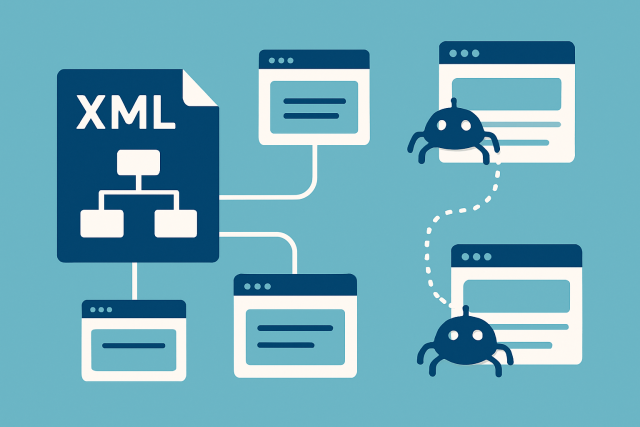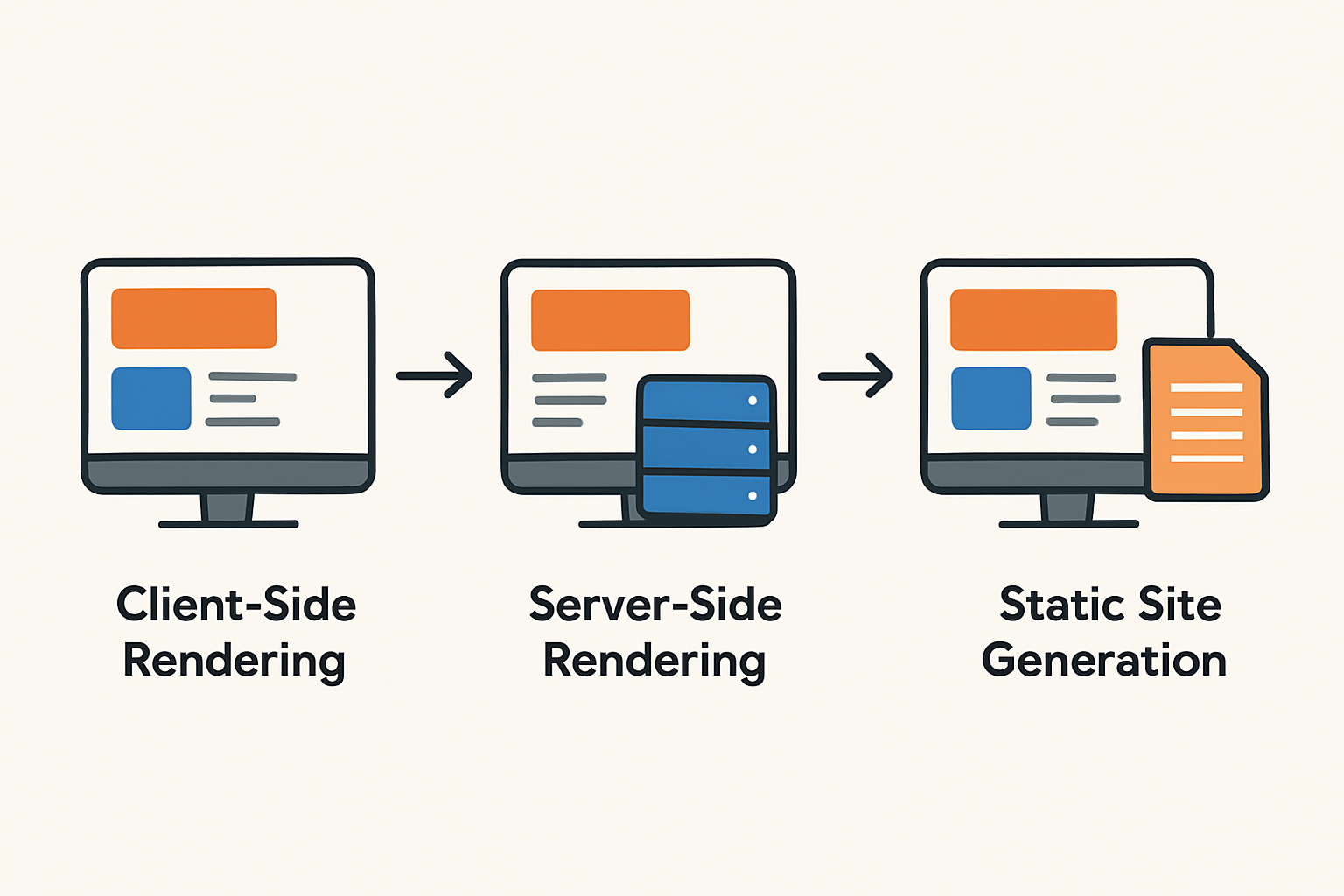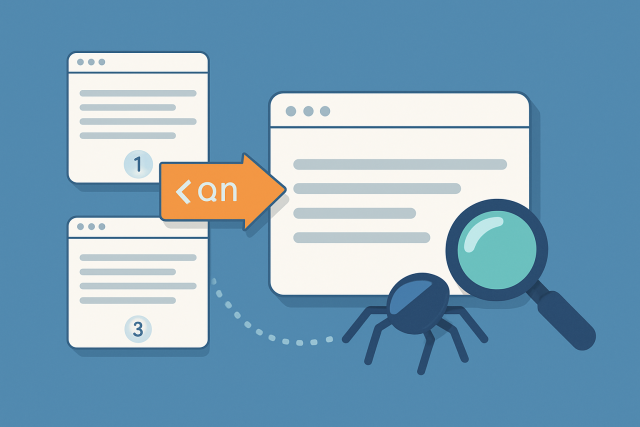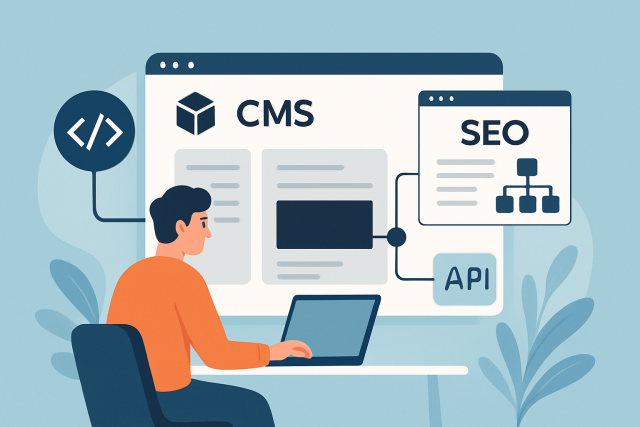
XML sitemap best practices to avoid indexing issues
Master XML sitemap best practices to ensure your website is efficiently crawled and indexed. Learn e...

Single Page Applications (SPAs) really shake up how users experience the web by loading content on the fly without the need to reload the entire page. This clever setup comes with its own quirky set of SEO challenges. Traditional SEO tricks often fall flat with SPAs, meaning they demand a more customized approach.
Single Page Applications load all their content dynamically within just one HTML page, relying on JavaScript to update the interface and navigate between views smoothly. Unlike the old-school multi-page websites where each page stands on its own as a separate HTML document, SPAs pull in data on the fly and render everything right there in the client’s browser.
Search engines have definitely stepped up their game when it comes to crawling and displaying JavaScript-based content but they’re not out of the woods yet. Googlebot can handle JavaScript though it often takes its time rendering and uses quite a bit of resources. This can lead to quirky inconsistencies when indexing single-page applications.
| Search Engine | JavaScript Crawling Capability | Indexing Speed | SEO Implications for SPAs |
|---|---|---|---|
| Uses advanced JavaScript rendering and actually runs JS while crawling, which is pretty impressive | Tends to be moderate to slow, often held back by those pesky rendering delays | Can index effectively if the SPA is well-optimized; supports server-side rendering and dynamic rendering, so it plays nice with well-prepped sites | |
| Bing | Offers basic to moderate JavaScript rendering that’s slowly but surely improving over time | Usually slower than Google, making you wait a bit longer for results | May miss some dynamically loaded content if server-side rendering isn’t in place, so best to keep that in mind |
| DuckDuckGo | Executes very limited JavaScript, mostly sticks to good old static crawling | Fast, yes, but doesn’t handle much JavaScript content at all | SPA content often ends up underindexed unless it’s pre-rendered—kind of like skipping the party unless you’re on the guest list |
| Yandex | Provides moderate JS support, though performance can be a bit of a mixed bag depending on the region | Indexing speed varies too, so it’s a bit of a wild card | Benefits a lot from server-side rendering and a careful setup of metadata, making it worth the extra effort |
| Baidu | Runs little to no JavaScript on its crawler, so it’s more old school in that sense | Fast when dealing with static content, which it prefers | SPA content is generally invisible without server-side rendering, so don’t count on Baidu catching your dynamic bits |
Building a strong SEO foundation starts with ensuring your SPA's development aligns well with search engine standards. Thoughtful site structure and clean, straightforward URL design go a long way in helping search engines wrap their heads around how your content is organized.
Set up a URL structure that clearly shows your content’s hierarchy and is easy for crawlers to navigate while avoiding complex or dynamic query strings that cause issues.
Develop a metadata plan early on and ensure each view has unique, clear meta titles, descriptions, and canonical tags—no copy-paste jobs.
Make sure key content is accessible right away without forcing users to jump through hoops or rely heavily on JavaScript.
Organize your navigation so crawlers can easily find all important sections through crawlable links, keeping things neat.
Consider using server-side or dynamic rendering to serve SEO-friendly snapshots of your SPA content—this gives search engines the VIP backstage pass they deserve.
Routing in SPAs plays a vital role in SEO. By using the HTML5 History API you can craft clean and straightforward URLs that clearly reflect your site’s content structure—no need to rely on pesky hash fragments that usually hurt your SEO.
Rendering strategies hold the cards in how smoothly search engines can crawl and index content from single-page applications. Server-Side Rendering (SSR), Static Site Generation (SSG) and hybrid approaches each have their own perks for SEO.

Visual comparison of rendering techniques: client-side, server-side, and static site generation
Metadata like meta titles and descriptions are key in the world of SEO and need to be generated on the fly in single-page applications to keep up with each unique view. I have found that using head management tools to update this metadata every time the route changes is a smart move because it helps search engines consistently grab the most relevant and accurate info.
Use head management libraries like React Helmet or Vue Meta to dynamically update your meta tags as users navigate.
Don’t forget to add Open Graph and Twitter Card meta tags because they are the secret sauce that make your content shine and perform better on social media.
Include JSON-LD structured data to give search engines a clear heads-up about what your content is all about. This can help you snag those richer search results we all want.
Keep your metadata consistent and avoid duplication. Trust me, this helps prevent SEO headaches like keyword cannibalization that can really slow things down.
Page performance is absolutely vital for both user experience and SEO rankings. In single-page applications, shaving off initial load times and speeding up time-to-interactive are key. Delivering resources like a pro is also important. Tweaking how JavaScript behaves and playing your cards right with caching can boost your performance metrics.
Having a clear internal linking setup in your SPA really gives search engines a leg up in finding every single page without breaking a sweat, while also spreading that valuable link juice all over your site. Making sure your links are crawlable and avoiding navigation that leans too heavily on JavaScript usually does the trick to boost indexability.
<a>) tags with spot-on href attributes for internal links—this way, search engines don’t miss a beat when crawling your site.Keeping your XML sitemap up to date is absolutely key for boosting SPA discoverability. Since SPAs tend to generate URLs on the fly, they usually crave clear instructions via sitemaps to get properly indexed. Also, getting your robots.txt file just right plays a big part in guiding search engines on which parts of the SPA to crawl or to pass over.
| URL | Priority | Change Frequency | Notes |
|---|---|---|---|
| https://example.com/ | 1.0 | Daily | The main homepage that proudly showcases all the key entry content. |
| https://example.com/products | 0.8 | Weekly | Product listing single-page app route, checked and refreshed every week or so. |
| https://example.com/products/item-123 | 0.6 | Monthly | Detail page for a specific product, updated about once a month—just enough to keep it fresh. |
| https://example.com/blog | 0.7 | Weekly | Blog SPA route where content gets a regular tune-up to keep readers coming back. |
| https://example.com/contact | 0.5 | Yearly | Static contact page that doesn’t change much—maybe once a year if we are feeling adventurous. |
Continuous SEO monitoring is absolutely key for SPAs when it comes to spotting those pesky indexing issues and boosting overall performance. Tools like Google Search Console are a real lifesaver, offering clear insights into crawl errors and the indexing status you need to keep an eye on. Meanwhile, performance audits do the heavy lifting by uncovering bottlenecks that might quietly sabotage your SEO efforts.
"One all-too-common SEO blunder with SPAs is assuming that client-side rendering by itself will cut the mustard for search engines. In my experience, kicking things off with server-side rendering or dynamic rendering can be a real game-changer to ensure your content actually gets noticed and climbs the rankings from day one." – SEO Expert Jennifer Lee
A number of companies have noticeably boosted their SPA SEO by rolling out some well-targeted strategies for SEO for single page applications. Take for instance an e-commerce platform that jumped on the SSR bandwagon to make their site easier to crawl. This resulted in a solid 40% jump in organic traffic within six months. Over on the SaaS side, a provider got smart with dynamic metadata management and fine-tuned their routing which clearly bumped up indexation rates and search visibility.
14 articles published
Driven by a passion for innovation and a deep understanding of consumer behavior, Cadence Ballantyne challenges conventional wisdom, offering fresh perspectives that inspire businesses to forge new paths in the ever-evolving digital realm.
Read Pages
Master XML sitemap best practices to ensure your website is efficiently crawled and indexed. Learn e...

Canonical pagination helps search engines identify the preferred page among multiple paginated URLs,...

Wondering if a CDN can boost your SEO? This article breaks down how CDNs improve speed, security, an...

Discover how to optimize headless CMS SEO effectively with advanced rendering methods, metadata auto...